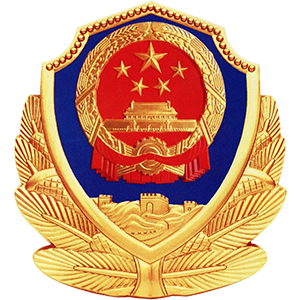| [1] |
Tao R.Electric-field-induced phase transition in electrorheological fluids[J].Phys Rev E,1993,47:423-426.
|
| [2] |
Parthasarathy M,Klingenberg D J.Electrorheology:Mechanisms and Models[J].Materials Science and Engineering,1996,R17:57-103.
|
| [3] |
Halsey T C,Martin J E,Adolf D.Rheology of electrorheological fluid[J].Phys Rev Lett,1992,68(10):1519-1522.
|
| [4] |
Halsey T C.The structure and dynamics of electrorheological fluids[A].In:R Tao Ed.Proceedings of the Conference on Electrorheological Fluids[C].Singapore:World Scientific,1992,37-52.
|
| [5] |
Rosensweig R E.On the magnetorheology and electrorheology as states of unsymmetric stress[J].J Rheol,1995,39(1):179-192.
|
| [6] |
Klingenberg D J,Zukoski C F.Studies on the steady-shear behavior of electrorheological suspensions[J].Langmuir,1990,6:15-21.
|
| [7] |
Bonnecaze R T,Brady J F.Dynamic simulation of an electrorheological fluids[J].J Chem Phys,1992,96(3):2183-2202.
|
| [8] |
Bonnecaze R T,Brady J F.Yield stresses in electrorheological fluids[J].J Rheol,1992,36(1):73-115.
|
| [9] |
Ginder J M,Ceccio S L.The effect of electrical transients on the shear stresses in electrorheological fluids[J].J Rheol,1995,39(1):211-234.
|
| [10] |
Conrad H,Chen Y,Sprecher A F.The strength of electrorheological fluids[A].In:R Tao Ed.Proceedings of the Conference on Electrorheological Fluids[C].Singapore:World Scientific,1992,195-218.
|
| [11] |
Bossis G,Lemaire E,Volkova O.Yield stress in magnetorheological and electrorheological fluids:A comparison between microscopic and macroscopic structural models[J].J Rheol,1997,,41(3):687-704.
|
| [12] |
Martin J E,Odinek J.Aggregation,fragmentation,and the nonlinear dynamics of electrorheological fluids in oscillatory shear[J].Phys Rev Lett,1995,75(15):2827-2830.
|
| [13] |
Jordan M,Schwendt A,Hill D A,et al.Zeolite-based electrorheological fluids:Testing,modeling and instrumental artifacts[J].J Rheol,1997,41(1):75-92.
|
| [14] |
Rice J R.Inelastic constitutive relations for solids:An internal-variable theory and its application to metal plasticity[J].J Mech Phys Solids,1971,19:433-455.
|
| [15] |
Ziegler H.Introduction to Thermomechanics[M].the second,revised edition.Amsterdam:North-Holland Publishing Company,1983.
|
| [16] |
Landau L D,Lifshitz E M.Pitaevskii.Electrodynamics of Continuous Media[M].the second edition.Chapters 1 and 2.Oxford:Pergamon Press,1984.
|
| [17] |
Eringen A C,Maugin G A.Electrodynamics and ContinuaⅠ,Ⅱ[M].New York:Springer-Verlag,1990.
|
| [18] |
Bossis G,Clercx H,Grasselli Y,et al.Theoretical analysis of field induced structures in ER and MR fluids[A].In:R Tao,G D Roy Eds.Electrorheological Fluids[C].Singapore:World Scientific,1993,153-171.
|
| [19] |
Happel J,Brenner H.Low Reynolds Number Hydrodynamics[M].Chapter 9,Dordrecht:Martinus Nijhoff Publishers,1986.
|
| [20] |
Ginder J M,Davis L C.Viscoelasticity of electrorheological fluids:Role of electrostatic interactions[A].In:R Tao,G D Roy Eds.Electrorheological Fluids[C].Singapore:World Scientific,1993,267-282.
|
| [21] |
Shulman Z P,Kordonsky V I,Zaltsgendler E A,et al.Structure,physical properties and dynamics of magnetorheological suspensions[J].Int J Multiphase Flow,1986,12(6):935-955.
|
| [22] |
Takimoto Jun-Ichi.Computer simulation of model electrorheological fluids[A].In:R Tao Ed.Proceedings of the Conference on Electrorheological Fluids[C].Singapore:World Scientific,1992,53-58.
|
| [23] |
Kim S,Karrila S J.Microhydrodynamics:Principles and Selected Applications[M].Part Ⅱ,Butterworth-Heinemann Series in Chemical Engineering,Boston:Butterworth-Heinemann,1991.
|




 下载:
下载:

 渝公网安备50010802005915号
渝公网安备50010802005915号